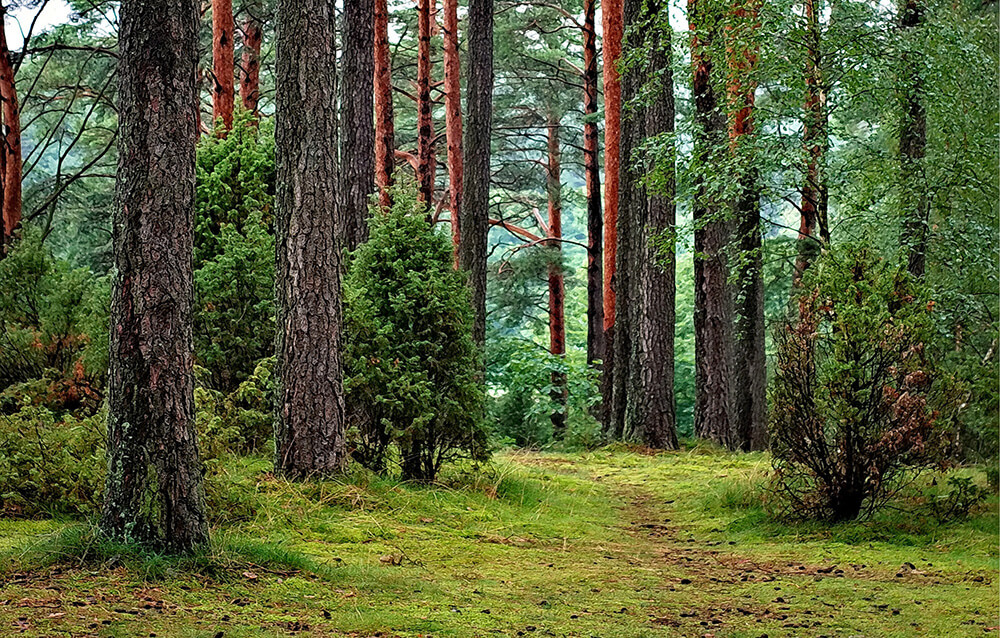Crop tree release

My woodlot in Bolton was logged in the 1980s. Through a practice known as “diameter-limit cutting,” all trees above a certain diameter (probably 11 inches or 14 inches) were cut. My land is a good site for growing red and white oak, white and red pine, red spruce and hemlock, but this harvest removed most trees of these species, creating a forest of mostly unhealthy beech and red maple. Using silviculture—the strategic harvesting of trees—I hope to restore my forest’s health by regenerating unhealthy areas and encouraging healthy trees of all species, all while maintaining a diverse forest with great wildlife habitat. While I have a lot of will power, a big tractor and a chainsaw, my work in my woodlot is limited by time, forcing me to consider how to maximize the impact of my efforts.
Most landowners who are interested in harvesting firewood or improving their forest pick an area and try to harvest every last unhealthy tree or fill their woodshed with dead-standing trees and blowdowns, ignoring living trees all together. The problem with this (other than harvesting dead wood, which should be left) is that they miss the opportunity to enact a much broader positive change; in addition to harvesting firewood, they could be encouraging the growth of healthy trees that provide a variety of important values. A landowner from Milton once told me that, when he bought his 50-acre woodlot, an old-timer told him to start harvesting firewood “in the back” (i.e. the part of the property farthest from the road) so that when he was old he’d have worked his way up to his house, and he’d have firewood close by. This landowner paused and said: “I started in the back. And I’ve been in the back ever since.” You will never be able to cut every unhealthy tree in your woods, and if you try you’ll never make a meaningful impact on your whole forest. However, with a simple shift in your mindset, the positive effect of your work can be much more significant.
The key is a silvicultural technique called “crop tree release.” Instead of focusing on every unhealthy tree, I look for the trees that I want to grow—crop trees—and harvest only trees whose crowns are touching their crowns. If neighboring trees are much smaller or their crowns are not touching, leave them alone. While it may seem counter-intuitive to leave obviously unhealthy trees standing, focus on what we are keeping, not what might seem to “need” to be cut. Our sole goal is to release these crop trees from competition—and to release as many as possible. “Defective” trees can stay in the woods, providing a range of benefits from wildlife habitat to carbon sequestration.
A crop tree can be selected for timber, mast (seeds or fruits that wildlife eat) production, maple sap, wildlife habitat or other benefits. Crop trees should generally be “dominant” or “co-dominant,” meaning that their tops are in the upper canopy of the forest, have a symmetrical, live crown, and lack wounds, rot and other defects. Tree identification is important as you consider what benefits you want to encourage. A Beginner’s Guide to Recognizing Trees of the Northeast, by Mark Mikolas, is a good tree identification book to start with.
An option for landowners who don’t have the equipment to pull trees out of the woods, don’t need any more firewood in the woodshed or are working with trees that are small or poor-quality firewood is to leave some trees you cut in the woods. Dead wood and brush on the ground may look messy but are important for building and stabilizing soils and storing carbon, among other benefits. “Girdling” a tree—cutting two parallel rings a half-inch deep into the bark around the circumference of the tree—kills it but retains it as a snag, another valuable wildlife feature. This means you’re spending less time pulling marginal firewood out of the woods, and you can release more crop trees.
Landowners are often great intuitive forest managers, with a strong relationship with their woods. The thing that we all lack is time. Hopefully focusing on identifying and releasing crop trees will help make the most of the opportunities we have to encourage the growth of healthy trees and forests.
For those interested in learning more about crop tree management, check out the NRS website.
Ethan Tapper is the Chittenden County forester. He can be reached via email, by phone at (802) 585-9099, or at his office at 111 West Street, Essex Junction.

